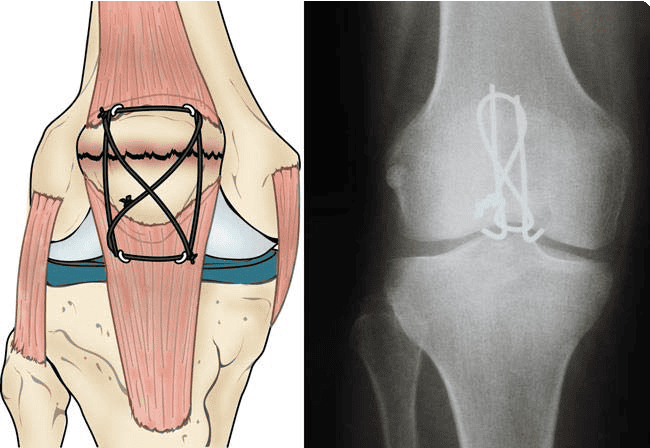The patella, also known as the kneecap bone, is a flat and rounded triangular bone which connects the thigh bone and shin bone. Injuries to the knee can sometimes lead to the patella breaking.
Patella Fractures usually occur from direct impact onto the patella. An example of this is a fall onto the knee with the knee in a kneeling position. In some patients with low bone density, sudden knee straightening can also cause the patella to fracture.
During a clinical evaluation, a medical professional is likely to ask questions about how the injury occured, and questions about the patient’s general health, occupation, and functional requirements. They will also examine for tenderness and movement in the knee.
The doctor will usually order X-rays, a radiological test that uses electromagnetic waves to generate black and white images of bones, to identify any alignment issues or broken or fractured bones. Occasionally, it may be necessary to also order CT scans for more severe injuries.
A Patella Fracture requires treatment for optimum healing. If you display any of the following signs and symptoms, it is recommended to seek medical attention:
If not treated immediately, patella fractures can cause complications such as:
The treatment of patella fractures depends on the severity of the injury. In general, If the patient is able to straighten his or her knee using only his or thigh muscles, surgery is not necessary.
Non-surgical treatment of patella fractures is typically carried out with long leg casts to keep the knee straight. This keeps the fractured bones together and allows the fracture to heal properly. The cast is usually worn for 4 to 6 weeks. In some patients, the cast can be removed early and a brace applied for greater comfort.
If surgery is deemed necessary, the fracture is usually treated with open reduction and internal fixation. This means that the fracture site is opened up surgically, and the broken bones are placed back together. The bones are then held together by strong wires.

Patients with fractured patellas can usually still walk, even if they are required to wear a cast. If no surgery is required, most patients will have their cast removed after 6 weeks. After cast removal, they will be required to undergo a course of physical therapy to improve knee bending and allow strengthening of their thigh muscles.
Patients who have to undergo surgery to fix their broken patella usually do not need to wear a cast. As such, they can usually commence physical therapy straightaway.
In general, most patients can expect to return to full activities 6 weeks to 3 months after their fracture, if their injuries are managed appropriately. For assessment of your condition, please book an appointment with Dr. Yong Ren.
Lorem ipsum dolor sit amet consectetur adipiscing elit ut arcu a dignissim suscipit non ac eget tellus in nisl mauris nec.
